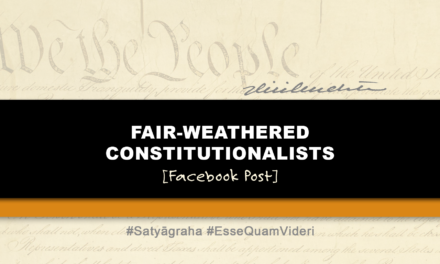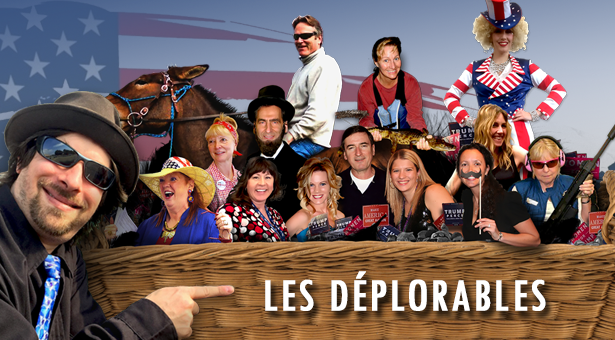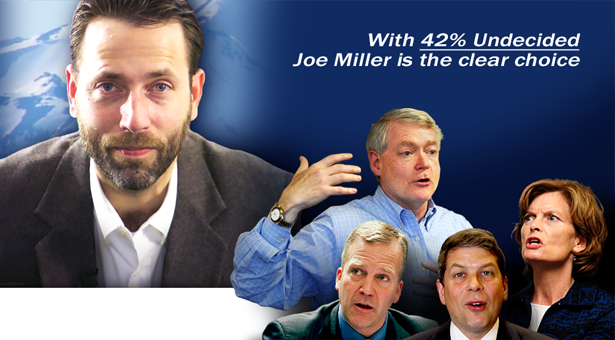Everyone is Biased.
‘Opinions are like a–holes. Everybody’s got one.’ We are all biased – it’s called having a unique perspective, or an opinion. How strongly our bias expresses itself depends on our individual experiences and exposure to the information.
This is why it is important to consume a spectrum of media sources, talk among ourselves, and not rely on limited media outlets.
Anyone (or any outlet) who says they don’t have a bias is lying to you. The mainstream media asserts they are the only objective, unbiased source of information… but they are literally lying to you, while employing techniques to encourage you to suspend your disbelief. This is a fact, based in science, and taught to media students.
America hasn’t had a Free Press for Generations.
My education included an extensive history of government research and propaganda – particularly WWII era principles and techniques from the US and Germany. We were privy to select internal memos of Walt Disney on projects and character development, and shown summaries of some of the aharmonic and abstract research jointly conducted by the US government (celebrated in “Fantasia”). Amazing, fascinating stuff… but potentially dangerous if used improperly.
We were also let in on the basic process of disseminating government messaging in modern media, and it’s prevalence. Yes, there is a clearing house for government messaging, which gets distributed to the networks, and is implemented with extreme faithfulness by the mainstream media.
When I commented in class that the US is supposed to have a free and independent press, I was informed by my professor that if I wanted to work in my field and not be black listed, that I would shut up and do whatever the industry required. He went on talking about how it would be a shame to waste all the money spent on my education.
Ultimately, I ended up not completing the program at Pratt, even though I was at the top of my department – and I chose not to work in the industry. Instead, I used my skills elsewhere to try and do something positive.
Suspension of Disbelief.
Think back to high school when you learned about Greek Drama, and you should remember terms like ‘in media res,’ ‘catharsis’ and ‘suspension of disbelief.’ In theater, how well an audience suspends their disbelief is very much dependent on how talented the actors are, and how supportive the lighting, set, costumes and props are in the production.
In film and video, you don’t have to rely on the acting as much as there are a variety of methods used in conjunction to achieve suspension of disbelief. The magic really happens in post-production, not on set (with live productions being trickier), and the suspension of disbelief is helped along by how the device the audience uses to view the work generates the image.
Perception, Science & Public Safety.
First of all, it’s important to know that you don’t ‘see’ with your eyes. You ‘see’ with your brain. Your eyes gather the information, send it via electrical signals to your brain, and your brain interprets it. So, if you know how the brain will process the information, poof. Like a magic trick, you can be made to ‘see’ or believe anything.
If you have a frame rate that is too low, the brain will interpret the product as choppy, incoherent and can even illicit a physiological response depending on content – like headaches and seizures. If it is too high, the brain may not consciously process all the information presented by the work, and you might waste effort and resources.
Of course, it depends upon your aim. Think about the entire idea of subliminal messaging, and the popular example from the movie ‘Fight Club’ where Durden spliced single frames of porn into family movies. The commentary was correct – a single frame wouldn’t necessarily register consciously.
Anyway, I have seen the topic of frame and flicker rate ridiculed as a tinfoil hat, but I assure you that it is a very serious subject. The last thing you want to do as an animator is send little kids into seizures while they are watching Saturday morning cartoons. So, it was clearly covered in class, and regarded as a public safety issue.
Besides all the neat medium-based techniques to the art, we also spent time learning how devices generate the product, including vertical and horizontal scan rates (flicker/refresh rates) and screen drift (which were very noticeable on CRTs). These elements do have an effect on how the product will be viewed and accepted by the audience.
Then there is the quality of light from these devices, and the ‘additive’ color propagation using the RGB color model (Red/Green/Blue). Yes, this matters too. If you limit your exposure to full spectrum light for extended periods of time, your health (including mental health) will decline. Alaskans know what I am talking about.
So, the more TV or screen time you get, the less full spectrum (sun) light you get, and the more it affects your body and mind.
It’s Physics, Folks.
And our government has been experimenting with all of these elements for generations, in conjunction with the media. Disney was (and probably still is) a top contributor to this type of research. I learned about this in class from my professors, who worked for Disney.
We also got some limited insights on Disney’s Imagineering program, which is the engineering end of how to bring the illusions created in 2D to life – like the awesome rides and exhibits at Disney World. Extremely fascinating, but I digress.
No Informed Consent.
Am I saying that these creative fields are bad, and that everyone it is evil? No. What I am saying is that the consumer (the audience) has been deliberately left in the dark on generations worth of research which is being used on them on a daily basis.
Where is the informed consent? There is none. People just take everything at face-value, when there is much, much more to it.
Shut Off the Damn Television.
So… yes, the mainstream media is trained to lie to you, and ‘the government’ is in on it. Which is why Americans are fighting back (finally), and taking back their government. They are tired of being lied to, manipulated, and used by those who have corrupted our system of government.
Please, shut off the damn television. Get rid of your cable. Stop watching the bullshit shows, believing the lying media, and buying their toxic products (like the gmos, fast food, fad ‘beauty’ products, pharmaceuticals, etc.). Stop emulating the illusion, and enforcing this false culture at school, at work, and at home.
Question and verify. Do your own work, use your own noodle, share what you find, and talk with others about it. Compare notes. That’s the only way We the People can sort through this mess.
Wake Up!
In order for us to be successful after this election (and into the future), it will take effort. So, make the time. The rest of us are waiting for you.





